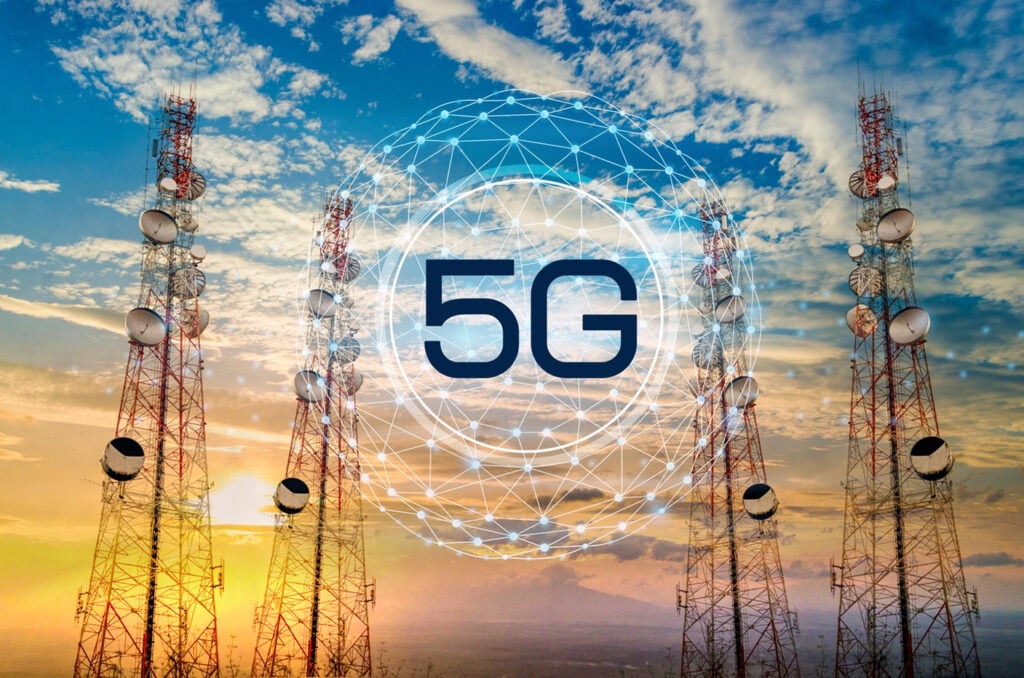
This blog provides an overview of the current state of 5G cellular data, with a follow-up planned to explore Private 5G in greater detail.
Why 5G Cellular Data?
5G cellular data services present an appealing option as a form of Wide Area Network (WAN) transport that doesn’t require fiber or wiring to connect locations. Unlike Wi-Fi, 5G can cover longer distances and is often more resilient in environments with radio frequency (RF) noise or interference.
The State of 5G Cellular Data
The potential of 5G for data applications is hindered by several factors, including complexity, economic considerations, and limitations related to bandwidth and physics.
Factor 1: Complexity
Delivering 5G service requires numerous servers and pieces of equipment, which can be located on-premises, in a carrier’s data center, or in the cloud. The platform providing the service is based on carrier technology, which tends to be more complex and less user-friendly than consumer technology. This complexity contributes to higher costs and the need for specialized skills.
Building a private 5G network adds another layer of complexity, requiring spectrum licensing, equipment setup, or outsourcing these tasks. Although private 5G is relatively new, it is evolving, with some solutions, such as those from Celona, approaching turnkey status. However, deploying and managing 5G—even when relying on existing carrier infrastructure—still involves dealing with site equipment, configuration, licensing, maintenance, and troubleshooting, all of which can be more challenging than traditional WAN networking.
“Building a private 5G network adds another layer of complexity, requiring spectrum licensing, equipment setup, or outsourcing these tasks.“
Factor 2: Bandwidth and Physics
5G offers substantial bandwidth and can support many users, although it’s not designed for extreme data rates (like 1 Tbps). While 5G has access to more licensed spectrum than Wi-Fi, it comes with additional costs.
A key consideration is that the total bandwidth available per cell is shared among all users connected to that tower. Voice and messaging typically have priority, while data traffic takes up the remaining bandwidth. This can lead to congestion when many users are accessing the network simultaneously, as seen during power outages when mobile data usage spikes.
The total bandwidth available per cell is shared among all users connected to that tower, leading to congestion during peak usage times.
Expanding bandwidth capacity for carriers involves adding more frequencies (spectrum), installing additional cell towers, or increasing the density of cell sites—similar to how Wi-Fi networks increase coverage by deploying more access points (APs).
Factor 3: The Cellular Challenge
In its current state in the U.S., 5G provides acceptable bandwidth for mobile users, especially when most people rely on Wi-Fi or wired LAN for data. However, if all data services were delivered solely through 5G, the network would require a much denser array of cell towers or antennas, which would likely increase costs.
If all data services were delivered solely through 5G, the network would require a much denser array of cell towers or antennas, which would likely increase costs.
Several barriers exist to expanding 5G coverage and capacity, including:
- Return on investment (ROI)
- High deployment costs
- Availability of skilled labor
- Legal permitting for antenna placement
- Spectrum licensing
- Power and backhaul connectivity requirements
How 5G is Evolving
The architecture of 5G, which is cloud-based, represents an improvement over the appliance-based setups of earlier generations like 3G and 4G. This cloud-based model enables cost reductions and easier scalability, making it more extensible and integratable with edge computing applications, such as computer vision processing. However, large-scale deployment for heavy data use is still in the future due to the high initial investment required.
Cellular 5G Data Versus Wi-Fi 6 or 7
Both 5G and the latest Wi-Fi technologies (6, 6E, and 7) face capacity constraints. While newer Wi-Fi standards offer additional spectrum and more efficient encoding, there is still a finite amount of capacity per access point.
| Feature | 5G Cellular | Wi-Fi |
| Coverage Area | Larger | Smaller |
| Deployment Cost | Higher | Lower |
| Regulatory Barriers | More | Fewer |
Wi-Fi has some key advantages over cellular, including:
- Smaller coverage areas per AP
- Lower costs for adding more APs
- Fewer regulatory barriers to deploying APs
- A larger pool of technicians available for installation and maintenance
However, Wi-Fi’s smaller coverage area generally results in more bandwidth per user compared to cellular networks. In contrast, cellular infrastructure, while costly, covers larger areas, making it suitable for applications that require long-distance connectivity.
In summary, 5G will continue to evolve, but its widespread adoption will depend on economic feasibility, particularly for carriers faced with high infrastructure costs and complex deployment challenges.
Conclusion
While 5G and 6G data services hold great potential, large-scale deployment may remain limited due to cost. Currently, most cellular data needs are met by 4G networks, and there is no strong market demand driving widespread 5G expansion. However, selected use cases, such as high data rate applications and private 5G networks, will continue to drive development where Wi-Fi is not feasible.
In summary, 5G will continue to evolve, but its widespread adoption will depend on economic feasibility, particularly for carriers faced with high infrastructure costs and complex deployment challenges.
